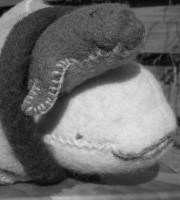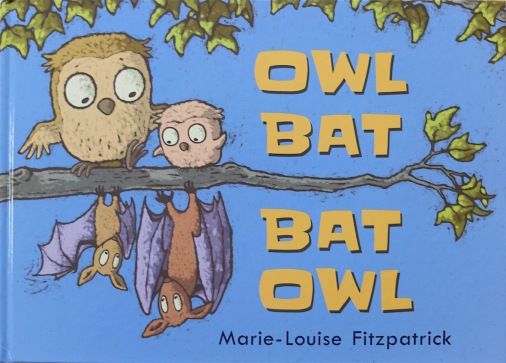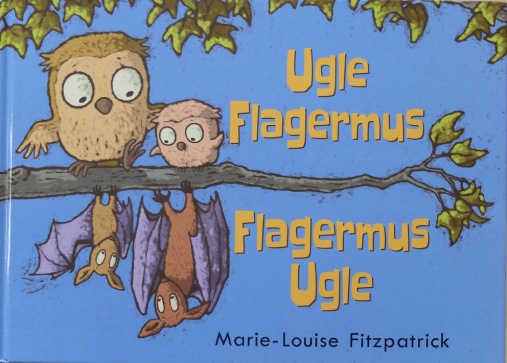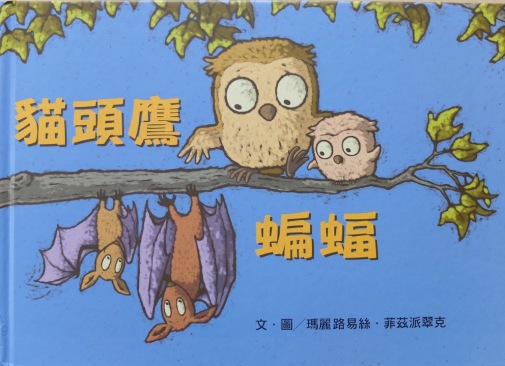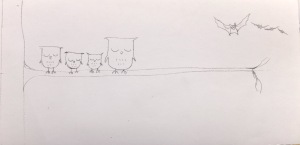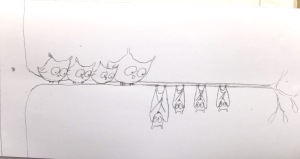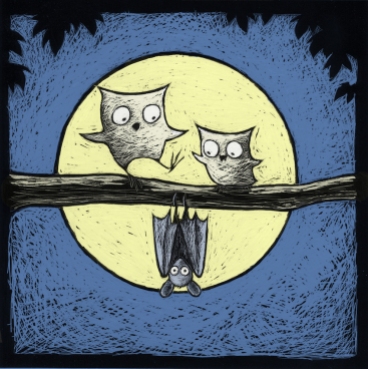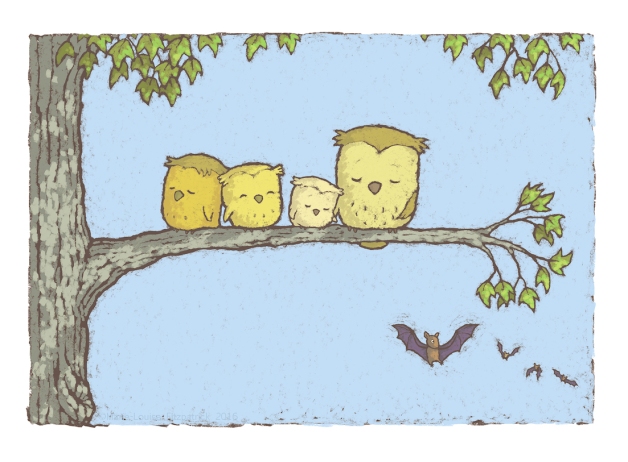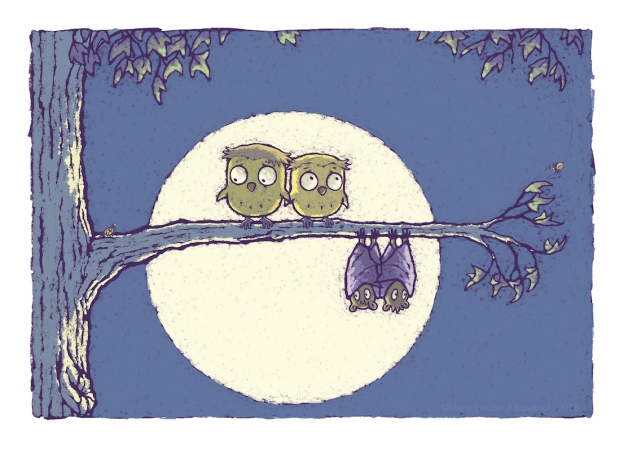Reading a picturebook to an audience of adults can be nerve-wracking. Adults are often intimidated by the form, worried that they aren’t going to ‘get’ it, scared they’ll laugh in the wrong place, so they tense up. Reading a SILENT book with adults is even more daunting. Reading picture books with kids is a doddle, but what happens when the book has no words?
The first time I attempted reading Owl Bat Bat Owl was with 70 kids in Limerick Library and I have to admit to wondering how exactly it was going to work. I needn’t have worried. I’ve read it many times now, in many places, and kids always nail it!
Kids: ‘It’s daytime, the bats should be asleep.’
Me: ‘Why do you think they’re out, flying around?’
‘Something bad has happened.’
Me: ‘Like what?’
‘They’ve lost their home.’ ‘Their tree has fallen down.’ A girl in Dun Laoghaire said, ‘Someone dropped a bomb on their cave.’
Only a couple of reviewers have made the link between the story and the refugee crisis; kids don’t use that term but those suggestions tell me they’re making the connection.
‘I think they’re practising segregation.’ 9 year old, Limerick library. Pole-axed me and the other adults in the room – that he used the term and obviously completely understood it.
Hoots of laughter.
Me: ‘What do you think the mammies are saying?
‘Get back up here, right this minute!’ Delivered with cross faces, hands on hips and Angry-Irish-Mammy voice.
‘Oh, oh! I think something bad is going to happen and then they’ll make friends.’ 3 year old, Moncton, Canada. Wow – what anticipation, and from a tot! Then she farted loudly, exploded into giggles and rolled around on the floor, to general hilarity.
‘They’ve got the wrong babies!’
Me: ‘What do you think will happen next?’
‘They’ll all be friends.’
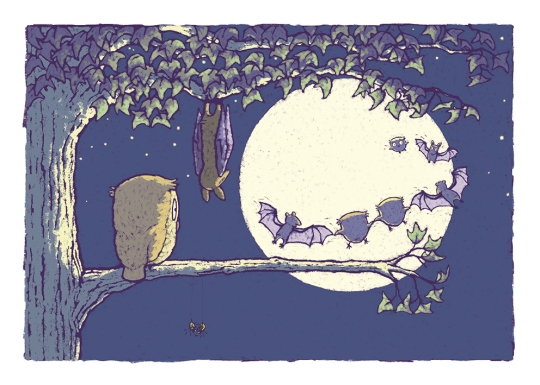 ‘Let me tell, let me tell! And the two mammies had a nice cup of tea and a chat, while their babies played in the light of the moon.’ 8 year old Nigerian girl, Limerick.
‘Let me tell, let me tell! And the two mammies had a nice cup of tea and a chat, while their babies played in the light of the moon.’ 8 year old Nigerian girl, Limerick.
And there be spiders:
Adults hardly ever notice them, but kids spot them very quickly and realise there’s another story to explore.
Owl Bat Bat Owl Walker Books/Candlewick
